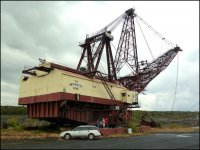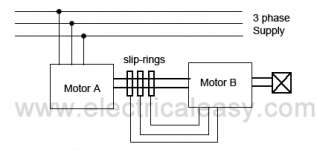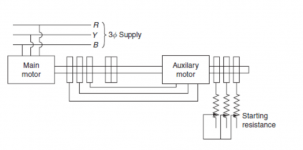230516-1627 EDT
W@attson:
Can you provide a speed-torque curve for your motor?
When I took a course in AC Machinery the book we used was by Bailey and Gault. Bailey was one of the pioneers in AC machinery. He was still alive when I took the class in 1955. I never met him. Gault was younger but had died before I took the course. So I had a different, but excellent teacher, J. G. Tarboux.
In said book is a chapter on Induction Motors. Page 185 has a plot of how the speed-torque varies with different rotor resistances. This plot of various rotor resistances shows maximum torque at various levels being the same. The lower the resistance the greater is the foldback in the curve, and the lower speed where this peak torque occurs.
A high inertia load on a low resistance rotor motor will take a longer time to accelerate, F = M * A.
To keep zero backlash during deceleration you need a motor drive torqure trying to accelearte the load greater than the frictional losses in the drive train. But obviously this torque needs to be as low as possible so as to not be accelerating the load. So obviously the speed torque curve needs to be low enough that it provides enough torque to keep backlash at zero, but not so high as to prevent the load from going to zero speed.
.





